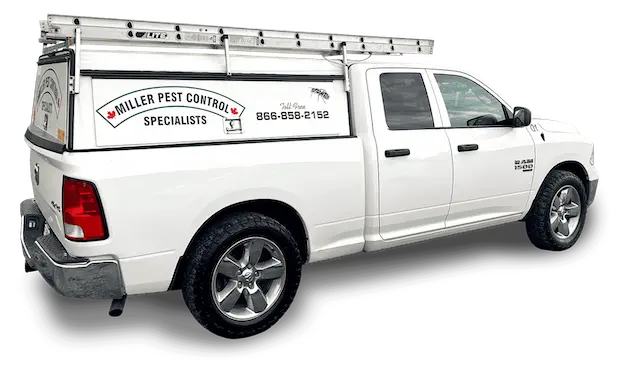Pennsylvania Wood Cockroach
Insect Control: How to Get Rid of Pennsylvania Wood Cockroaches
- Baiting is the safest and most effective method of controlling a cockroach infestation. However, to effectively control cockroach infestations, several baits must be set out and placed correctly
- Baits should be placed in harbourage and foraging sites or close to other points of entry
- Though store-bought and or home remedies can be useful for short-term use, the most effective way to consistently rid your home of a cockroach infestation is to hire a trained pest control professional.
How to Identify a Pennsylvania Wood Cockroach Infestation
The species frequently invades summer cottages, it can be a nuisance but they don’t typically infest homes they same way their urban counterparts the German Cockroaches do.
- Size: Males are approximately 1.6 to 2.4 cm, females 1.2 to 1.8 cm.
- Colour: Dark brown with a yellowish outline where its wings overlap the edge of its body.
How to Prevent a Pennsylvania Wood Cockroach Infestation
These cockroaches are found in wooded areas such as those around rural homes or cottages. This species rarely live inside homes and other buildings in large numbers; they prefer to live and breed outdoors. A Pennsylvania wood cockroach infestation usually occurs accidentally as they are attracted to lights or brought in with firewood.
- Remove all food and unnecessary water sources.
- Seal all cracks and crevices where they may enter.
- Store firewood away from homes and check it before bringing it indoors.
Possible Health Concerns
- Cockroaches can contaminate food and spread disease by walking over, and excreting on, food or food prep locations after having travelled through garbage
- People with asthma may have a reaction to their droppings
About Pennsylvania Wood Cockroaches
The Pennsylvania wood cockroach (Parcoblatta pensylvanica) is a common species of cockroach in eastern and central North America.
They feed on decaying organic matter, sweets, and starchy materials. They typically live outside, underneath woodpiles, in stumps, or in hollow trees. They can become a problem in homes during mating season when the males follow wandering females into a home or other building.
They are also attracted to the lights found on decks and in the windows of homes. One of the most common ways they enter homes is on woodpiles transferred indoors for fires.

